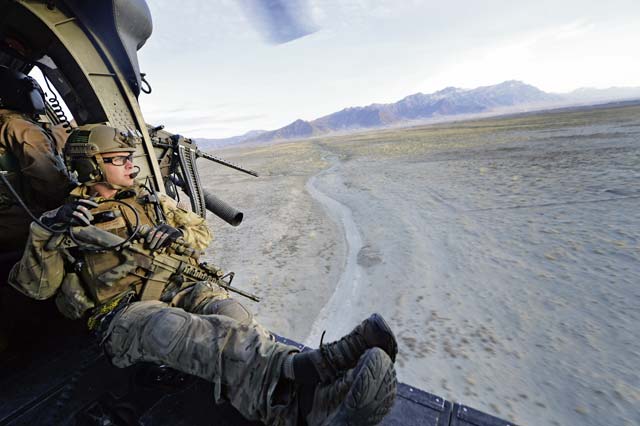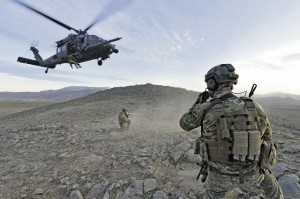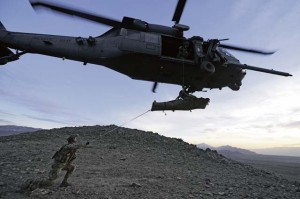
Editor’s note: This is the first in a six-part series about medical response capabilities for deployed service members from start to finish and the various milestones for care and transportation of combat-wounded troops in Afghanistan.
BAGRAM AIRFIELD, Afghanistan ― “The Golden Hour” refers to the hour immediately following a serious injury and is the most critical period in the patient’s survival.
The call comes in; there is a coalition forces member in need of immediate and serious medical care in the eastern mountains of Afghanistan. Within minutes, a small tactical recovery team, known as Guardian Angel, is on a helicopter heading toward its objective.

For the members of Bagram’s 83rd Expeditionary Rescue Squadron Guardian Angel, this is exactly what they train for, and they are ready to execute. Their mission is to rescue, recover and return American or allied forces in times of danger or extreme duress.
“We have less than an hour to get that patient under ‘bright lights and cold steel’ if they are going to live,” said Staff Sgt. George Reed, 83rd ERQS pararescueman, referring to that “golden hour” when a patient has no other option than immediate surgery.
“Any environment, anytime, anywhere we will execute a rescue mission or patient recovery,” Reed said.
Maj. Joe Lopez described Guardian Angel as a U.S. Air Force weapons system comprising three career fields: the CRO (combat rescue officer), the PJ (pararescuemen) and SERE (survival, evasion, resistance, escape).
This combined weapons system can execute the five phases of personnel recovery: report, locate, support, recovery and reintegrate.
Recovering patients in Afghanistan requires not just combat medical training but increased situational awareness in case of enemy activity.
“Our team is highly trained on ground tactics,” said Lopez, 83rd ERQS combat rescue officer. “In many cases, we have to provide our own security in a hostile location while we prepare the patient for transport.”

One of the distinct capabilities of the GA team is technical rescue where they utilize extrication equipment to remove warfighters or civilians trapped in wreckage or collapsed structures in almost any terrain or environment.
The situation can vary from a high altitude crash to a mass casualty incident to a packaged patient ready for evacuation.
“The idea is to get in and out as fast as possible without exposing the patient to additional threats,” Lopez said. “The longer we are on the ground, the longer we are vulnerable to attack and can decrease the patient’s chance of survival.”
While in flight, the pararescuemen perform trauma medicine to stabilize the patient in order to bring them safely to a higher level of care.
The actions of these battlefield Airmen of the Bagram 83rd ERQS Guardian Angel prove their dedication and commitment to saving lives and staying true to their motto: “These Things We Do … That Others May Live … To Return With Honor.”


